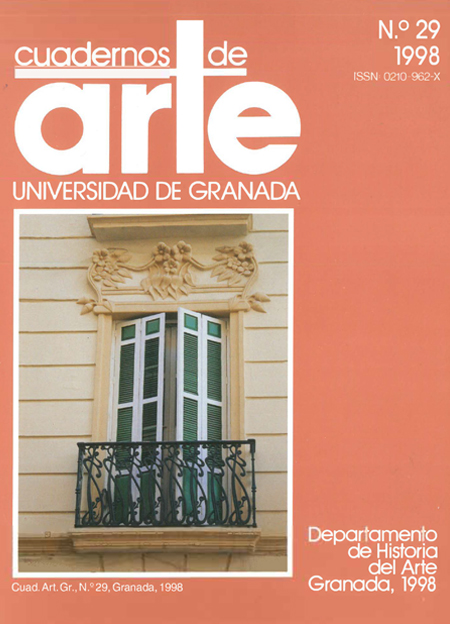Secret places in Renaissance art. The grotto as opening and closure of the pastoral landscape
Keywords:
Iconography, Allegories, Symbology, Grottos, Renaissance artAbstract
The image of the grotto as perceived in Antiquity and in the Spanish humanistic tradition can also be considered central to our knowledge of Renaissance artistic settings. lt seems to represent the dynamicrelationship between the natural and the artificial, between the deliberately unfinished image and that completed according to accepted conventions, thus enriching the integration of the arts within the genres of poetry and the pastoral novel.The use of the pastoral grotto settings also recalls the Theme of the Flood as a dark place in the origin of the cosmos which contrasts with the idealizing conventions of Christian Humanism and pure Classicism which prefers a geometrical plan, with a harmonic elevation.
Downloads
Downloads
Published
1998-11-01
How to Cite
Blázquez Mateos, E. (1998). Secret places in Renaissance art. The grotto as opening and closure of the pastoral landscape. Cuadernos De Arte De La Universidad De Granada, 29, 201–212. Retrieved from https://revistaseug.ugr.es/index.php/caug/article/view/10396
Issue
Section
Estudios
License
Los autores que publican en esta revista están de acuerdo con los siguientes términos:- Los autores conservan los derechos de autor y garantizan a la revista el derecho de ser la primera publicación del trabajo al igual que ser licenciado bajo una licencia Creative Commons que permite a otros compartir el trabajo con un reconocimiento de la autoría del trabajo y la cita de la fuente original, con un uso no comercial y siempre que no se hagan obras derivadas.
- Los autores pueden establecer por separado acuerdos adicionales para la distribución no exclusiva de la versión de la obra publicada en la revista (por ejemplo, situarlo en un repositorio institucional o publicarlo en un libro), con un reconocimiento de su publicación inicial en esta revista.
- Se permite y se anima a los autores a difundir sus trabajos electrónicamente (por ejemplo, en repositorios institucionales o en su propio sitio web) antes y durante el proceso de envío, ya que puede dar lugar a intercambios productivos, así como a una citación más temprana y mayor de los trabajos publicados (Véase The Effect of Open Access) (en inglés).


 ISSN-e: 2445-4567
ISSN-e: 2445-4567








